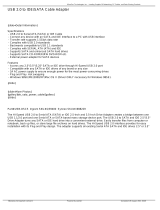
3
Contents
1 Introduction ................................................... 5
1.1 Package Contents .......................................................... 5
1.2 Specifications ................................................................ 6
1.3 Motherboard Layout ...................................................... 8
1.4 ASRock I/O Plus
TM
.......................................................... 9
2 Installation...................................................... 10
Pre-installation Precautions ................................................... 10
2.1 CPU Installation .............................................................. 11
2.2 Installation of CPU Fan and Heatsink ............................ 11
2.3 Installation of Memory Modules (DIMM)......................... 12
2.4 Expansion Slots (PCI and AGP Slots) ........................... 13
2.5 Jumpers Setup .............................................................. 14
2.6 Onboard Headers and Connectors .............................. 15
2.7 Serial ATA (SATA) Hard Disks Installation ..................... 18
2.8 Making An SATA Driver Diskette .................................... 18
3 BIOS SETUP UTILITY........................................... 19
3.1 Introduction .................................................................... 19
3.1.1 BIOS Menu Bar .................................................... 19
3.1.2 Navigation Keys ................................................... 20
3.2 Main Screen................................................................... 20
3.3 Advanced Screen ......................................................... 21
3.3.1 CPU Configuration ................................................. 21
3.3.2 IDE Configuration ................................................. 23
3.3.3 Floppy Configuration ........................................... 25
3.3.4 Super IO Configuration ........................................ 26
3.3.5 Hardware Health Configuration .......................... 27
3.3.6 ACPI Configuration ............................................... 27
3.3.7 USB Configuration ............................................... 28
3.4 PCIPnP Screen ............................................................... 29
3.5 Boot Screen................................................................... 30
3.5.1 Boot Setting Configuration .................................... 30
3.5.2 Boot Device Priority ............................................... 31
3.6 Security Screen ............................................................ 31
3.7 Chipset Screen .............................................................. 32
3.7.1 NorthBridge Chipset Configuration ....................... 32
3.7.2 NorthBridge Chipset Configuration ....................... 34
3.8 Exit Screen .................................................................... 35





















